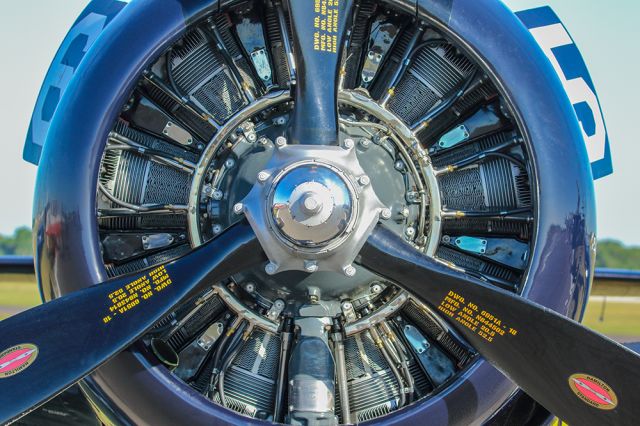All
 |
|
North American Trojan —
Beautiful T28 rotary engine. Questions about this photo can be sent to [email protected]
Comments
Radial engine, not rotary, rotaries were used in WWI and although looked similar they were completely different in design.
WHAT USED rotaries in WWI?
still a nice photo of a very clean Wright 1820-76D ?
still a nice photo of a very clean Wright 1820-76D ?
@jesse the Sopwith Camel used a rotary
early radial engine was the three-cylinder Anzani, originally built as a W3 "fan" configuration, one of which powered Louis Blériot's Blériot XI across the English Channel. Before 1914, Alessandro Anzani had developed radial engines ranging from 3 cylinders (spaced 120° apart) — early enough to have been used on a few French-built examples of the famous Blériot XI
In World War I many French and other Allied aircraft flew with Gnome, Le Rhône, Clerget, and Bentley rotary engines, the ultimate examples of which reached 250 hp (190 kW) although none of those over 160 hp (120 kW) were successful
In World War I many French and other Allied aircraft flew with Gnome, Le Rhône, Clerget, and Bentley rotary engines, the ultimate examples of which reached 250 hp (190 kW) although none of those over 160 hp (120 kW) were successful
The Newport 17 was
Powered by the 110 hp Le Rhône rotary engine
Powered by the 110 hp Le Rhône rotary engine
sorry, those were not rotaries
they were radials, w/ prop affixed to engine. the engine turned on crankshaft. created horrible gyro effect during maneuvers!
they were radials, w/ prop affixed to engine. the engine turned on crankshaft. created horrible gyro effect during maneuvers!
The model referenced matters: https://en.wikipedia.org/wiki/Rotary_engine
In some aircraft, this could be advantageous in situations such as dogfights. The Sopwith Camel suffered to such an extent that it required left rudder for both left and right turns, and could be extremely hazardous if the pilot applied full power at the top of a loop at low airspeeds. Trainee Camel pilots were warned to attempt their first hard right turns only at altitudes above 1,000 ft (300 m).[17] The Camel's most famous German foe, the Fokker Dr.I triplane, also used a rotary engine, usually the Oberursel Ur.II clone of the French-built Le Rhone 9J 110 hp powerplant.
https://en.wikipedia.org/wiki/Nieuport_17#Specifications_(Nieuport_17_C.1)
Powerplant: 1 × Le Rhône 9Ja 9-cylinder rotary engine, 82 kW (110 hp)
In some aircraft, this could be advantageous in situations such as dogfights. The Sopwith Camel suffered to such an extent that it required left rudder for both left and right turns, and could be extremely hazardous if the pilot applied full power at the top of a loop at low airspeeds. Trainee Camel pilots were warned to attempt their first hard right turns only at altitudes above 1,000 ft (300 m).[17] The Camel's most famous German foe, the Fokker Dr.I triplane, also used a rotary engine, usually the Oberursel Ur.II clone of the French-built Le Rhone 9J 110 hp powerplant.
https://en.wikipedia.org/wiki/Nieuport_17#Specifications_(Nieuport_17_C.1)
Powerplant: 1 × Le Rhône 9Ja 9-cylinder rotary engine, 82 kW (110 hp)


Please log in or register to post a comment.